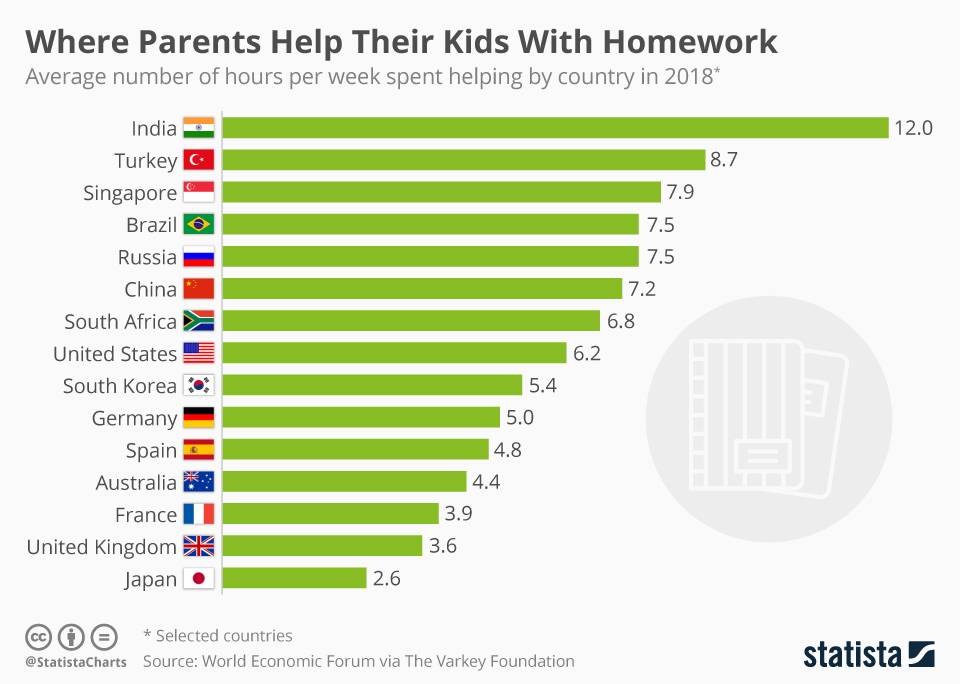Nearly 62 percent parents in India on an average spend about 12 hours a week to help children with their studies.
Indian parents manage to spend the most amount of time helping their children with homework, according to a World Economic Forum (WEF) report.
Nearly 62 percent of parents in India on an average spend about 12 hours a week to help children with their studies.

The high percentage could be due to the increasing competition among students to score better marks. Most of the universities in India require students to clear entrance exams as there are limited seats.
related news
Over 22 percent of the 39,071 colleges enrol less than 100 students and only 4.3 percent colleges enrol more than 3,000, according to All India Survey on Higher Education (AISHE) 2015-16 report.
Limited seats availability in universities combined with the increasing young population has led to an increase in competition among students. Currently, over 55.9 crore of India’s population are between 6-23 years, according to Ministry of Human Resource Development (MHRD)'s latest available projections.
Increasing competition has resulted in the rising peer pressure among children.
"...the amount of time you spend helping your children with schoolwork could give them the edge over their competitors in the workplaces of the future," the WEF report said.
While it indicates parents concern towards their child's education, the high percentage also raises question about parent's confidence in the country's education system.
"Around 55 percent of parents with children in state-funded educational institutions said that they would send their child to a fee-paying school if they could afford it," the report said.
Over 65 percent of all school-going children in 20 states — about 113 million — are enroled in government schools, according to District Information System for Education (DISE) data.
Parent's willingness to send their children to private institutions seems reasonable as a majority of government-run schools lack infrastructure, teachers and other facilities.
A rough estimation based on the government sources indicates that there is a shortage of 30-40 percent faculty in colleges and universities at all levels.
On an average, the Pupil Teacher Ratio (PTR) stood at 21 in 2016, according to the MHRD report. The report also stated that the PTR had remained unchanged for the past five years, indicating a shortage of teachers as India's student population grows.

Cost of education in private schools remain one the major reasons for parent's inability to send their children to private institutions. Over the last few years, media reports suggest the fees have gone up by nearly 20 percent.
"Private fee charging schools are a visibly ubiquitous phenomenon in urban and rural India. On the one hand they are in high public demand and growing in numbers, on the other, in public discourse their growth is often dubbed the ‘mushrooming of teaching shops’ and opposed," professor Geeta Gandhi Kingdon had pointed in a March 2017 research paper based on DISE data.
Parents seem to spend extra time with children to help them study to ensure their children do not fall behind due to lack of qualified teachers in schools.
About 6,40,000 teachers in the government schools across the country are yet to acquire the qualifications prescribed by National Council for Teacher Education, the DISE report said.
ASER 2017 shows that nearly 40 percent students attending government schools also opt for tuition. The private tutoring institutes have doubled in one year, but the fees charged by these institutes add to the financial burden of parents.
Helping children with their studies, seems to be a viable option for parents to ensure the students receive quality education.